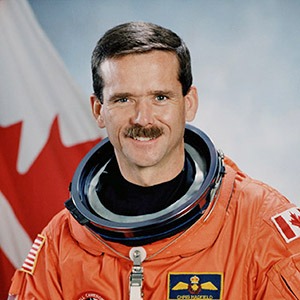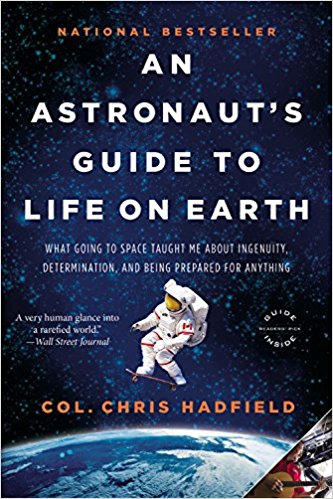An Astronaut’s Guide to Life on Earth Summary
6 min read ⌚
What Going to Space Taught Me About Ingenuity, Determination, and Being Prepared for Anything
Do you want to learn how to become an astronaut?
Or how life in space can alter your perspective about living on Earth?
Then, read our summary of Chris Hadfield’s “An Astronaut’s Guide to Life on Earth.”
It answers both of these questions.
Who Should Read “An Astronaut’s Guide to Life on Earth”? And Why?
If you are interested in astronauts – or dreaming of becoming one – then you should buy “An Astronaut’s Guide to Life on Earth” as soon as possible.
However, Chris Hadfield’s autobiography should be your choice even if you are merely looking for a book to help you live a better and more fulfilled life – one that has nothing to do with astronomy and spacecrafts.
After all, just look at the title.
About Chris Hadfield

Chris Hadfield is a retired astronaut, the first Canadian to walk in space.
Both an engineer and a former Royal Canadian Air Force fighter pilot – one of the very best – he first flew in space in November 1995 as a mission specialist. Six years later he went back and walked in space for the first time.
In December 2012 he flew for a third time, after which he served as a commander of the International Space Station from March until May 2013.
He is a member of the Orders of Ontario and Canada and has received both the Canadian Forces Decoration and the Meritorious Service Cross.
“An Astronaut’s Guide to Life on Earth Summary”
When I was young – that is, before I turned 12 or something – when asked what I would like to be, when I grow up, I’d always answer “astronaut.”
I mean, what could be better than being an astronaut, right?
Floating through space, zero gravity and all, strange planets and beautiful stars all around you, the Earth just a pale blue dot in the far distance…
The best possible profession a guy can have.
Well, if that ten-year-old me could have read “An Astronaut’s Guide to Life on Earth,” the autobiography of Col. Chris Hadfield, aka the first Canadian to walk in space, he would have probably had at least a few second thoughts.
Because – who would have guessed? – being an astronaut isn’t what the dictionaries teach you (that is, something along the lines of “a spacewalker” or “a member of a spacecraft”), but, actually, merely a person trained to do those things.
But wait: Hadfield has an even better definition:
An astronaut is someone who’s able to make good decisions quickly, with incomplete information, when the consequences really matter.
Wait a moment, you say – there’s nothing about planets and stars, space and spacecrafts in this definition; nothing at all! And these things are there in the very word, be it “astronaut” or “cosmonaut”! You can’t fool me: they mean star- or space-sailor!
Where’s the sailing in Hadfield’s definition of an astronaut?
Well, there is some sailing – true – but most of it is stationary, and it happens on Earth. As Hadfield points out, in general, you need several months of training to prepare for one single day in space!
And you’ll get your first mission only after several years. And – surprise! surprise! – you’ll have to spend the next two to four years training for that specific mission.
The really heartbreaking part of this all is that no matter how good you are and how much you want to go into space, the chances are stacked against you from the start!
After all, it only fits three people in a Soyuz spacecraft, which means that not only each of them should be exceptionally well-prepared, but also that the three chosen ones should be experts in mutually compatible categories.
Well, Hadfield was one of these lucky few.
And the main lessons he learned in space – and which he believes are applicable everywhere, let alone Earth, are these three:
#1. There’s no such thing as over-preparation. That’s actually the background of Hadfield’s definition of an astronaut; an astronaut, simply put, is one who has prepared for everything in advance and who is capable of acting fast even when something unpredictable happens. After all, it’s not like there’s a rescue crew near you!
#2. The more they criticize you, the safer you are. Even the smallest blunder can be a crucial one when you’re in space; so, at NASA, everyone is – and should be – a critic; in other words: you should pray that they criticize you so that you can learn what not to do the next simulation.
#3. Make up for the lost time with your loved ones. Being an astronaut means spending a lot of time away from your family; Hadfield tried making up for that by prearranging the delivery of Valentine gifts for his wife or lighting the biggest candles (the rocket’s engines) for his son’s 16th birthday (which was on the very same day as Hadfield’s launch)
By the way, we forgot to mention (in case you don’t know):
Chris Hadfield is a great and exceptionally funny John Cleese lookalike, and you should really check him out on YouTube, debunking space myths or sharing his experiences at TED.
Or, channeling his inner Bowie:
Thanks, Chris: that video never fails to make our day!
Key Lessons from “An Astronaut’s Guide to Life on Earth”
1. Preparation Is Everything: The Power of Pessimism and Negative Thinking
2. The Importance of Making Mistakes and Accepting Constructive Criticism
3. The Only Thing You Can Control Is Your Attitude
Preparation Is Everything: The Power of Pessimism and Negative Thinking
Astronauts have a saying: “there is no problem so bad that you can’t make it worse.”
However, once you’re in space, a problem means certain death in 1 out of 35 cases – which are not chances you’d like to see aggravated.
Can you improve them?
Of course: by taking a trick from the old Stoic book and visualizing everything in a negative light.
Use the same strategy in life as well: because when you’re prepared for something in advance, you can be a lot calmer.
“It sounds strange, probably,” writes Hadfield, “but having a pessimistic view of my own prospects helped me love my job.”
The Importance of Making Mistakes and Accepting Constructive Criticism
“A man of genius makes no mistakes,” wrote James Joyce once, “his errors are volitional and are the portals of discovery.”
Pretentiousness aside, Joyce is right about the second part: making a mistake is actually the best way to learn new things. Just think about the way people learn to play an instrument! They make many mistakes, and they try until they stop making them.
If you go on playing your guitar the same away after making a mistake (i.e., appropriating it), your brain will think it’s the right way and will engrave it as a habit.
In other words, making a mistake is just a part of the learning process; seeing the mistake is the other. And since we are incapable of seeing our mistakes as clearly as impartial observers, constructive criticism should be a big part of every apprenticeship.
So, instead of saying “oh, shut up,” say “thank you” the next time someone points out a mistake of yours.
The Only Thing You Can Control Is Your Attitude
As we pointed above, even if you want to become an astronaut in the customarily accepted meaning of that word, there’s a high chance that you won’t.
After all, only 561 people from no more than 40 countries have gone into space so far.
However, Hadfield never gave up.
He just reframed his state of mind:
I don’t determine whether I arrive at the desired professional destination. Too many variables are out of my control. There’s really just one thing I can control: my attitude during the journey, which is what keeps me feeling steady and stable, and what keeps me headed in the right direction. So I consciously monitor and correct, if necessary, because losing attitude would be far worse than not achieving my goal.
Like this summary? We’d like to invite you to download our free 12 min app, for more amazing summaries and audiobooks.
“An Astronaut’s Guide to Life on Earth Quotes”
I never stopped getting ready. Just in case. Share on X In order to stay calm in a high-stress, high-stakes situation, all you really need is knowledge. Share on X Each time you manage to do that your comfort zone expands a little, so if you ever face that particular problem in real life, you’re able to think clearly. Share on X Rehearsing for catastrophe has made me positive that I have the problem-solving skills to deal with tough situations and come out the other side smiling. Share on X Anticipating problems and figuring out how to solve them is actually the opposite of worrying: it’s productive. Share on XOur Critical Review
We really like Chris Hadfield, so we loved this book from start to finish.
And so did almost each and every reviewer, describing “An Astronaut’s Guide to Life on Earth” as “a satisfying behind-the-scenes look at the life of an astronaut” (Kirkus Reviews) and as “a very human glance into a rarified world” (WSJ).
Allow us to include one more quotation at the end: “Houston, we have a superstar!”
Emir is the Head of Marketing at 12min. In his spare time, he loves to meditate and play soccer.








